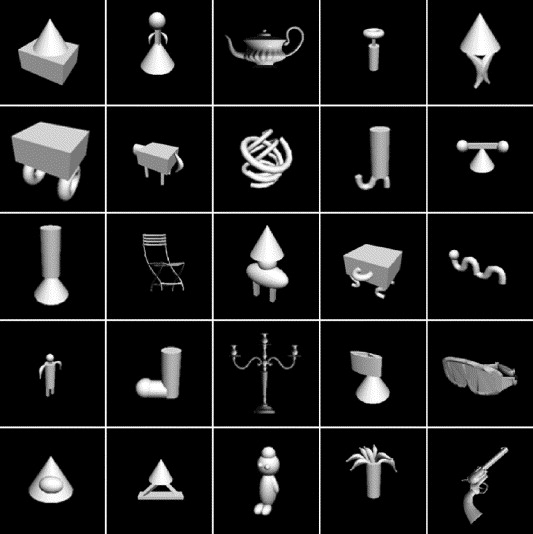Visual Rhetoric is the study of the way language and images work together, and how they can most effectively persuade. If you take Language Theory or linguistics one of the first things they beat into your head is that all humans seem to have an innate ability to learn language. Through language we have the ability to abstract and conceptualize. I am not sure it is not the other way around, and that we are born with an innate ability to abstract and conceptualize, and language is a by-product of that. When we start talking about visual rhetoric I hope you will begin to see that we also have an innate ability to understand images and graphics, in fact probably more so than language itself, and that in a way, what we see is a language in and of itself. There is the difference between knowing what a tree is called, “Tree,” and knowing what a tree is.
Visual Language – The integration of words, images, and shapes into a single communication unit, or the use of words and images or words and shapes to form a single communication unit.
In Linguistics…
A Phoneme is the smallest unit of sound. This is vowels and consonants in the English language.
Morphemes are the smallest unit of meaning. Tri, as in Triad or Triangle, is arguably a small unit of meaning denoting the concept of “three.” By adding and removing morphemes, such as suffixes and prefixes, root words can be turned into whole new words. Ex. Distinct, distinguish, distinguished, distinguishable, indistinguishable, etc.
In Visual Rhetoric…
Primitives or “Geons”
What makes artists good at what they do is they have an ability, whether natural or developed, to break anything they see down into the various geometric shapes that comprise them. So, instead of seeing an elephant the artists sees a series of cylinders, spheres, eggs, cubes, etc. that are all interconnected in a way that makes something we call an elephant. If you ever seen those “How-to-Draw-a-blank” drawing books you know they always show that “these are the shapes that comprise a human, or a tiger…” and they show you these weird little diagram sketches of a rough humanoid or tiger shape made out of “balloons” that just needs details added to it.
These geometric shapes are called primitives. Primitives work the same way phonemes do in linguistics. The English language has like thirty something, but Hawaiian only has 15 (Mele Kalikimaka is the thing to say on a Hawaiian Christmas Day). No more than 50 or so phonemes are ever found in any language. A Perceptual Psychologist named Irving Biederman figured out that humans perceive and recognize about 36 “Geons” or primitive, three-dimensional shapes. A lot of CGI programming is done by simply manipulating computer generated geons. There are the general basic shapes, such as cubes, cylinders, cones, spheres, and wedges, and then variations of all of those. The other talent the artists possess is the ability to translate 3-D into 2-D, and vice versa. Simpsons action figures always look weird to me because they are not supposed to be three-dimensional.
Properties of Primitives
Value, Texture, Color, Orientation (or Space depending on what you’re looking at), Size, Location in a 2-D Space, Location in a 3-D Space, Motion, Thickness (of line), Illumination (or highlighting if you want to think of that way).
Look at the way motion is created in the comics. The lines used to indicate motion are primitives that we might consider having very general symbolisms, such as motion vs. really fast motion.
 Image from the journal article “Acquisition of Visual Shape Primitives,” by Ladan Shams.
Image from the journal article “Acquisition of Visual Shape Primitives,” by Ladan Shams.
Visual Language Communication Units (VLCU)
Icons or VLicons are the smallest units of meaning in the same way morphemes are. An Icon is any symbol that represents something, such as the letter “L” or the number “1” or just a big “X.” A VLicon is simply a visual element with a small amount of text, such as octagonal red plaques with the word “STOP” written on them. These “stop signs” with only three elements, color, shape and text, relate a whole series of rules and regulations that direct people what to do when they encounter one.
Horn refers to the next element as a concept diagram. This is a more complex visual element that usually consists of icons in the same way semantics works in linguistics. The way we combine morphemes to create complex and/or compound words, and words into syntactical sentences, for example, is the same way we combine icons to create greater meaning. Diagrams are often a good example of this, thus the name. They contain more than one shape, maybe different sized shapes, possibly color schemes, and usually as minimal amount of text as necessary.